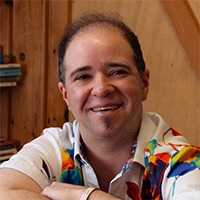Is Your Collection a Book, or Just a Portfolio?
Poetry, short stories, essays, and art books—the North Street Book Prize judges love a good collection. But it's not always easy to transform a body of work from a loose portfolio into a cohesive, compelling book.
Annie Mydla, Managing Editor
In this post, I'll talk about some ways that past North Street winners and honorable mentions have used genre conventions, length, scope, topic choice, exploratory depth, and thematic arcs to structure their collections and make us love their subjects as much as they do.
Keep genre identity clear
Almost every collection needs a strong genre identity. Genre is the platform upon which readers stand when viewing your collection. If the genre shifts too much from piece to piece, for example, from story to essay to poem in a single collection, readers might feel like they're using energy to switch gears rather than to enjoy and appreciate. Similarly, a clear commitment to your genre can increase readers' faith in an author's skill, knowledge, and depth of feeling.
Bob Sylva's short story collection, The King of Karaoke, won First Prize for Literary Fiction in 2019 in part due to its unifying theme. Some stories have touches of magical realism, and others don't, but the diversity of approaches does not come across as arbitrary or confusing, because all the stories focus on the lives of immigrants in Sacramento. The author explores the literary fiction genre in a variety of ways from story to story, while at the same time keeping the collection firmly within a single genre.
Occasionally, a well-edited hybrid-genre submission can also be successful. For example, Juliette Chen's Home Water, Honorable Mention in Poetry for 2018, includes poems and prose, but the prose is lyrical, bringing it closer to poetry. Linoleum and woodcut prints by the author are directly related to the content of both poetry and prose. North Street readers loved it: advanced-round judge Ellen LaFleche called the book a "gorgeous symbiosis that gave me the chills". And so, while other mixed-genre collections were cut in early rounds, Home Water's high sense of focus made it a North Street success.
Refine length and scope
The most successful collections we see are tightly edited around their strengths. For example, I remember being thrilled by a short story collection with five strong literary fiction stories exploring temporary connections between strangers. If that had been the entire collection, it would have sailed through to the next round of judging. In this case, though, those stories were mixed in with less-well-executed domestic drama, sci-fi, and political pieces that didn't overlap with the core content. A little more editing would have made all the difference.
Art books can gain a whole new level of magic when closely edited. Narrowing scope is great for this. For example, instead of "the state of Massachusetts", choose something more specific, like "the dune shacks of Provincetown". Or, instead of "trees of the American South", zero in on "the live oaks of Louisiana", as William Guion did in his 2022 Honorable Mention, Return to Heartwood. You might be surprised at how a tight scope can create opportunities for larger commentary. The oaks in Return to Heartwood lead to a wider discussion about racism and colonialism while maintaining the attention-grabbing specificity of the narrow premise.
Poetry collections can spring to life with a little extra pruning. "Love", "grief", and "healing" are each important parts of human life, but tend to encourage bloat if made the central "focus" of a collection, no matter how strong individual poems might be. Look deeper. How narrow can your scope become and still provide opportunities to explore?
If a collection is too long, but all the content is truly good, you might have more than one book on your hands. Irene Young's Something About the Women, a compendium of her photo portraits of lesbian-feminist culture makers, was an Honorable Mention for Art Book in 2024 despite its wide scope. Judge Jendi Reiter opined that the product might have been even stronger in three separate volumes, "each of which told a tighter story organized around a sub-group of notable women who had worked together". Excellent material can shine even brighter when allowed to breathe.
I've known self-published authors to bridle at word or page count recommendations, but there are reasons for these time-honored conventions. Short story collections typically consist of about 15 stories (up to 40,000-60,000 words). The recommended length for poetry collections falls between 48-90 pages. Art books often come in at 48-300 pages—but the upper end is typically only for material that is especially conceptually/visually rich, or already famous. That said, even well-known artists don't necessarily demand a large page count. One of our best Art Book submissions ever, The Art of Symeon Shimin, about the life and work of a renowned and historically important Russian-American Jewish painter, gives readers a truly powerful experience at a modest 156 pages. Remember, whether your book is prose, poetry, or art, you're creating a curated experience for the reader, not just including content because it's there.
Sell your subject to the reader
You already know your topic is important, so be sure to show the reader why it's worth organizing a book around! Introductions are okay for this, but what's really important is what your book includes and how it's contextualized. Jeff Shelton's The Fig District: Some Buildings in Downtown Santa Barbara, First Prize for Art Book in 2024, isn't just "pictures of buildings". The camera angles and the juxtapositions of fascinating patterns and building materials give a sense of urgency, attention, and love beyond what words could say. The text recounts how Shelton and his team of artisans solved unique design challenges for buildings in this historic district. Take time to investigate your passion for your subject, then share it with readers through your content choices.
Keep topics fresh
If your collection seems bloated, it's almost always worth checking for types of material that have occurred in, or could occur in, someone else's book. That content could risk being perceived by judges as dead weight unless the angle and craft approach are substantially different from what we usually see. For example, we often receive:
*Art books about sunsets and the beach
*Poetry collections about love, loss, and life wisdom
*Story and essay collections about topics like domestic drama, sexual abuse, cancer, and the counterculture of the 1960s and '70s
Shout it to the masses, carve it on my tombstone: If you want to get the attention of contest judges, agents, or magazine editors, then part of being a book creator is knowing what tropes are common in your field, then learning how to avoid, subvert, or build on those tropes. It might take work, but that can become a source of creative inspiration in its own right.
Go deep, not wide
North Street judges love to see topics plumbed to the bottom of their inky depths. We want books that reveal facets of the topic that normal people never see, then show us the surprising and intimate ways they relate to our lives. Similarly, a wider, shallower focus can be less exciting to judges.
You can make us enthusiastic about your work by using a small number of topics intensively and creating interactions between pieces. Jendi once commented that although a poetry collection's individual poems might be good, it's important that one poem lead to the next:
Poetry, I think, has to either have a narrative arc or a thematic weaving of around two to five themes and image sets that you're going to start with and develop. Like a fugue, like a motif, that is being developed and recurring, and intertwining with other motifs.
The same criteria apply to short stories, short essays, and art books. How are the themes, tone, and craft patterns developed from one piece to the next?
Build an emotional arc
A sense of "building" is important to us, too. Jendi comments that even if an art book has good images, the book needs to feel like it's building to something—that it isn't "just a collection". We're looking for an emotional arc that creates feelings of forward movement, escalation of tension, and then catharsis and release—whether the medium is prose, poetry, or visual art.
When thematic building happens, the results can be outstanding. According to Their Kinds, a short story collection by Abigail Anklam that won Honorable Mention for Literary Fiction in 2019, was highly focused on non-anthropomorphized animals and topics like extinction, animal intelligence, and the exploitation of animals. Themes are developed from piece to piece, contributing to the collection's sense of suspense: where among these ideas and images will the author take us next? How high can the arc of emotion truly reach?
Conclusion
North Street judges have been blessed by wonderful collections over the years, and we're looking forward to many more. I hope this discussion of our favorites' strengths inspires you to find opportunities for expression through genre identity, length, scope, topic choice, exploratory depth, and the formation of emotional arcs. Building up those skills can transform a portfolio into a polished, professional book.
Categories: Advice for Writers, Annie in the Middle







